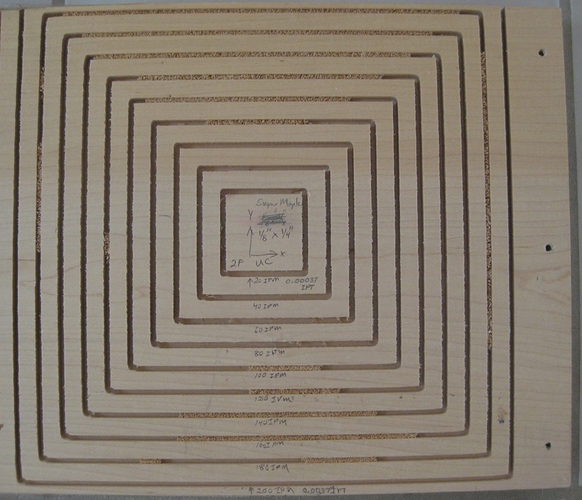Don’t forget that carbide endmills, unlike plastic, are good thermal conductors and heat takes the path of least resistance. Heat typically spreads radially outward from its source in conductors but not in insulators (because it can’t.)
Also remember that the heat is produced by cutting inefficiencies. So, cutting thicker chips requires more power and generates more heat, Thicker chip are also harder to clear as shown below. Single pass 1/8" wide X 1/4" deep slots were cut in sugar maple with a 2 flute upcut endmill at 27,000 RPM at feeds from 20 IPM (0.00037 IPT) to 200 IPM (0.0037 IPT) on a Shapeoko XXL with Dewalt DWP611. Some of the bigger chips were dug out, none of them fall out.
" I’d love to see someone work up a full physics simulation of a cut which would accept:
- material characteristics
- endmill characteristics
- spindle settings
- G-Code toolpath
and which would spit out a count of:
- volume of material removed
- approx. # of chips generated and their size / shape
- required power input for the spindle
- greatest forces exerted against work-holding and the direction(s)
- temperature range of chips
- heat imparted on the uncut stock
For bonus points, it would analyze the toolpath and adjust feed rate, and spindle rate to optimize the cut."
Tried this? 2019-08-15a Speeds and Feeds Workbook.zip (155.7 KB)
